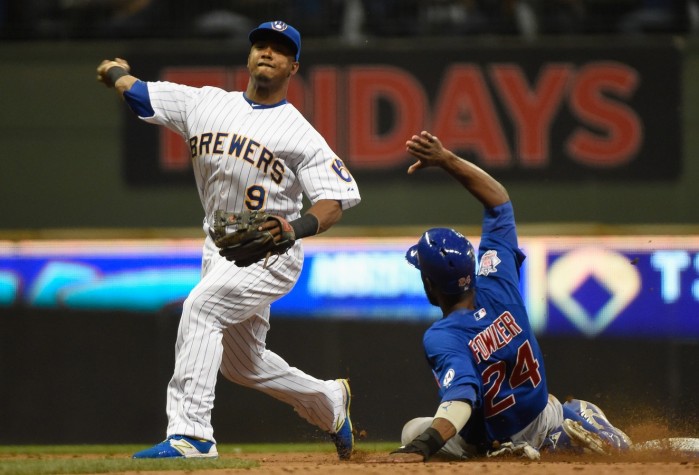Two years ago, Jean Segura looked like one of baseball’s bright young stars. Milwaukee acquired him from the Angels in the Zack Greinke trade, and his first full year in the majors was a resounding success.
Since then, he has not lived up to the lofty expectations he established for himself in 2013. He has relied on his defense for his value, and he has been a well-below-average hitter each of the last two seasons. His .235 TAv in 2014 and .218 in TAv in 2015 are far below the league average mark of .260.
Even with that low offensive output, though, he has been a valuable player. He averaged about 3 WARP per season over the last two, which combines with his contract status to make him a shortstop that any team would like to have.
There are two problems for his future with Milwaukee, though. The first is that he is trending the wrong direction. His OBP has dropped all the way to .281, and his slugging percentage has stabilized at a very low .336. Additionally, his glove—which had provided so much of his value for the first couple years of his career—was a big disappointment in 2015.
Defensive metrics are admittedly volatile. His true talent is almost certainly somewhere between the 23 FRAA he put up in 2013 and 2014 and the 10 he posted in 2015, but defense does peak early. And considering that Segura was never known for his defense as a prospect, his 2013 and 2014 seasons could very feasibly be the outliers.
Orlando Arcia is the second problem. Segura gets his value from his defense and his positional adjustment. Neither would be as significant if he has to shift to second base to accommodate Arcia, which does seem like a plausible scenario. After all, Scooter Gennett got most of the playing time at second this year, and he was mostly just valuable as a high-contact platoon option.
Arcia, though, is coming off a strong minor league campaign in which he shot to the top of Brewers’ prospect rankings. While he could be held down until the Super 2 deadline next year, he seems likely to get the majority of the big league at bats at shortstop in 2016 after spending all of 2015 at Double-A and establishing that he has nothing left to prove.
The 21-year-old Arcia also has the higher upside. While Segura has already established himself as a solid major league shortstop, the unknown quantity is always more exciting—so the team will be hoping that Arcia develops into the true star that Segura simply isn’t. And, to further that end, they will not want Segura to stand in his way.
Thus, Segura’s future in Milwaukee is hazy. If he is forced to move to second, his value—both real and in the trade market—will drop. The new front office could foresee this problem and look to deal him this winter before the positional jam becomes an on-field issue, but a 68-win team trading one of its young, quality players seems unlikely. Therefore, perhaps the most likely outcome is Arcia being forced to actively take the job at spring training and then failing to do so through no fault of his own. He will then spend a portion of 2016 in the minors while the organization tries to figure out its issue.
On the surface, it seems like this bad a team having too many good, young shortstops is not actually a problem at all. The complicating factor, though, is that one of those players is good only because he plays shortstop.
